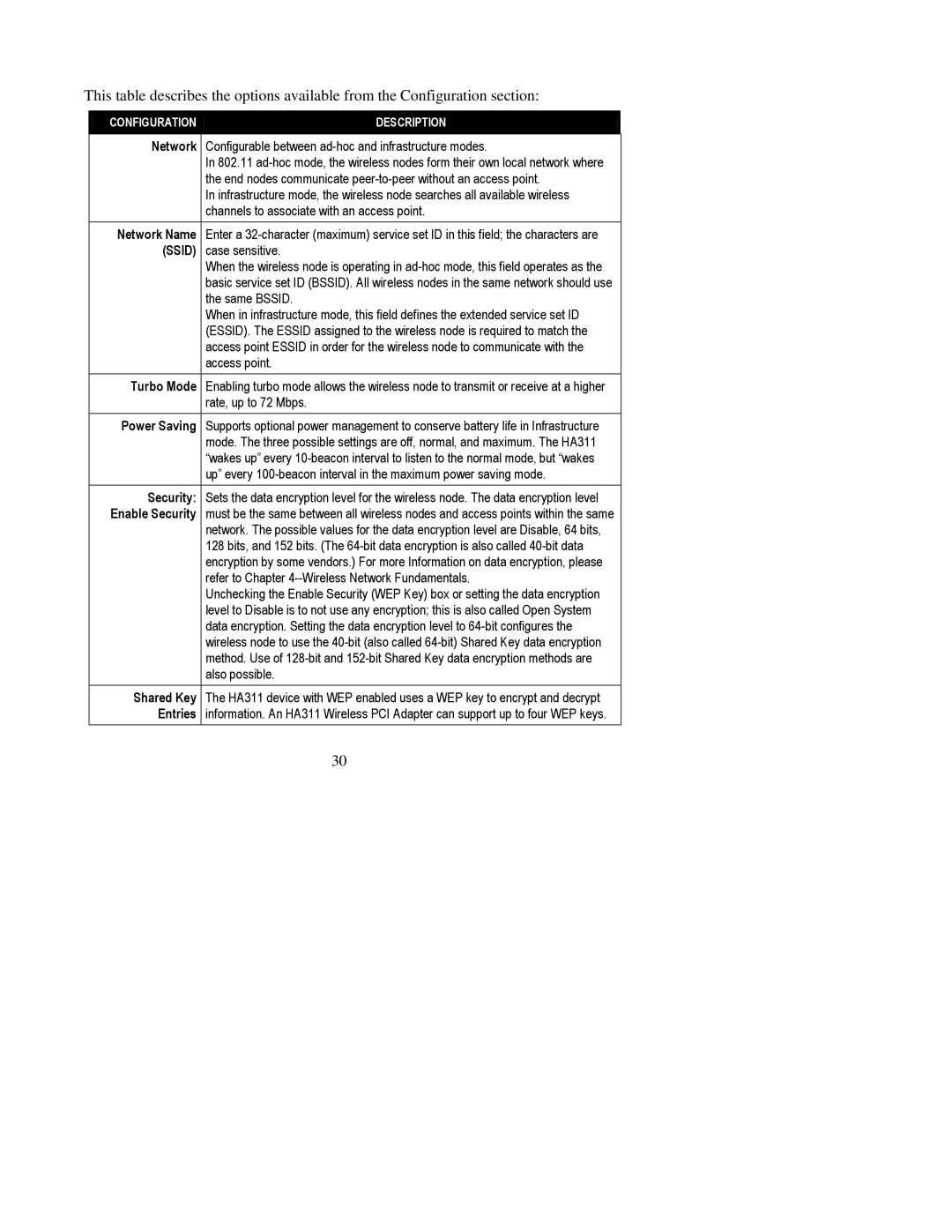This table describes the options available from the Configuration section:
CONFIGURATION | DESCRIPTION |
|
|
|
|
Network | Configurable between |
|
| In 802.11 |
|
| the end nodes communicate |
|
| In infrastructure mode, the wireless node searches all available wireless |
|
| channels to associate with an access point. |
|
Network Name | Enter a |
|
(SSID) | case sensitive. |
|
| When the wireless node is operating in |
|
| basic service set ID (BSSID). All wireless nodes in the same network should use |
|
| the same BSSID. |
|
| When in infrastructure mode, this field defines the extended service set ID |
|
| (ESSID). The ESSID assigned to the wireless node is required to match the |
|
| access point ESSID in order for the wireless node to communicate with the |
|
| access point. |
|
Turbo Mode | Enabling turbo mode allows the wireless node to transmit or receive at a higher |
|
| rate, up to 72 Mbps. |
|
Power Saving | Supports optional power management to conserve battery life in Infrastructure |
|
| mode. The three possible settings are off, normal, and maximum. The HA311 |
|
| “wakes up” every |
|
| up” every |
|
Security: | Sets the data encryption level for the wireless node. The data encryption level |
|
Enable Security | must be the same between all wireless nodes and access points within the same |
|
| network. The possible values for the data encryption level are Disable, 64 bits, |
|
| 128 bits, and 152 bits. (The |
|
| encryption by some vendors.) For more Information on data encryption, please |
|
| refer to Chapter |
|
| Unchecking the Enable Security (WEP Key) box or setting the data encryption |
|
| level to Disable is to not use any encryption; this is also called Open System |
|
| data encryption. Setting the data encryption level to |
|
| wireless node to use the |
|
| method. Use of |
|
| also possible. |
|
Shared Key | The HA311 device with WEP enabled uses a WEP key to encrypt and decrypt |
|
Entries | information. An HA311 Wireless PCI Adapter can support up to four WEP keys. |
|
| 30 |
|
